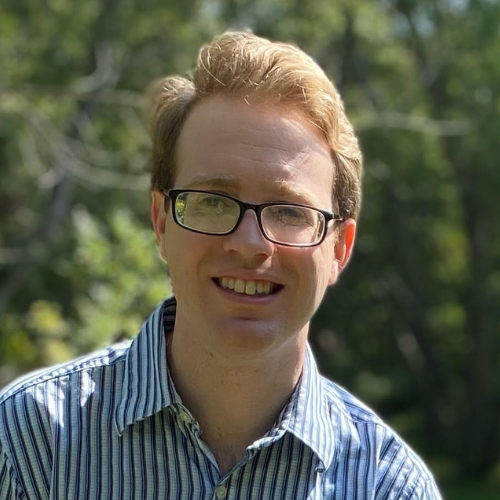This series last semester was interrupted by life—as you might notice if you scroll down, my third post talks about an assignment that occurred before the research paper and multimodal project. My semester did not end there. My students went on to complete research papers and multimodal projects, with adaptation (mostly) in mind. My life was busy, certainly, but so were the lives of my students and peers. It felt like all of us—at least educators I know—had a rough return to campus after the summer of 2021. It was also my first time back in a classroom since March of 2020. Even as a former TA and PhD student in coursework myself, I was not as well adjusted to pandemic classrooms as I had thought.
I will not try and (over)analyze every lesson in class that failed or fell flat, but I will offer one observation about my own teaching that I hope is relatable: I am not as engaging as I thought. Or, more positively, the rules of engagement in the space I inhabit as an educator have changed. When students elected to work in groups silently through Google Docs, I found myself unprepared to force conversations and liveliness. I’ve thought of various potential solutions. For instance, I could have temporarily outlawed devices. But at what cost? Some students need devices for accommodations and others simply work better with them—who am I to ask them to put them away, in the sake of how I want their learning to go?
There were also other factors I needed to adjust to. I was teaching after lunch for some and after waking up for others (my class started at 1:25). My students had varying levels of experience writing in high school. At the end of the semester, many admitted to logging in to Zoom classes during the lockdowns and then napping while their teachers talked. Others stated that their high school teachers didn’t say much about college, or what to expect, given their own scramble to prepare for Zoom classes in an (alarmingly, unfortunately) unprepared world.
I appreciate my students’ honesty and I do not say any of this to be denigrating. I think many of us can empathize with both parties—the students and their high school teachers. It’s also possible none of this played into why my lessons weren’t “working” in the way that I thought they might. And I likely need to reconsider what a lesson “working” means to me and to my students—though less of my students filled out their feedback forms than I would have liked, I did receive generally positive feedback about my accessibility and efforts to encourage them. It appears my own post-lockdown insecurities, like those of my students, bled into my perception of the room.
As an aside: to the students who provided feedback—who almost certainly won’t read this—thank you for your encouraging notes and for motivating me to revisit my teaching strategies.
Ultimately, though, when Olivia reached out to me last week, I knew I had to continue. I view adaptation more than ever as a necessary tool for survival in college classrooms as we continue to navigate changing environments, in flux for several reasons. The pandemic, terrifying book bans, accidental bombs on campus, and our neighborhood AI friend ChatGBT, are just a few recent instigators of change. It is not surprising that I felt more like a human product of BADaptation, “one that does not suit its new environment or changed conditions” (Elliott 20).
This semester, I am teaching in a classroom where all twenty-two of us sit in a circle at 8:00 in the morning. I initially wanted to move rooms (Cheryl, as always, is very kind and helpful), but ultimately decided to stay. Our forced proximity shows potential already, as students adapt to the change in seating and perspective. I will need to ensure my presentations are accessible, given the room’s constraints, but I look forward to making these changes with my students as a team of adaptors in a new space.
Regarding content, I am still using adaptation as a lens through which students can view composition. I kept Spike Jonze’s Adaptation (2002) on the syllabus, but I replaced Robert Louis Stevenson with Joseph Harris’ Rewriting and other short texts. In addition to content changes, I (begrudgingly) adapted to available technologies and build out Canvas modules in addition to the syllabus, so that assignments would appear in the digital “to-do” list. I’m sure many of you already do this and I know from observation that many of you are successful without it. I wasn’t. So, though I do not understand using Canvas as a digital planner (in lieu of a physical planner), I don’t need to. As my harshest, probably imaginary critics would say: Cat, get on board or get out of the way. And, because I’ve elected to remain on board, I am going to prioritize time management this semester as a key component of writing. Digital planner, paper calendar, or neither, I want my students to utilize their community as they learn to manage their time as writers.
Looking back at my first blog post in October of 2021, I talked about adaptation texts and introduce adaptation as a more general concept. I ask how we define adaptation, why we define it, when we define it… I also ask, what is an adaptation doing? – how does it do it—and who does it do it for? This semester, I want to plant myself more distinctly in the role of an adaptation. What am I doing? How am I doing it? Who am I doing it for? I am also hopeful to open this conversation to some of my peers, to talk about adaptation in our department and in our community. How are we adapting, when are we adapting, and who are we adapting for?
In future posts, you should expect to see more classroom situations, student examples, and discussions with other educators. Rather than a specific outline, which I made far too rigid last semester, I am going to make this blog a space for constant adaptation. In other words, it will change depending on how everything goes. For instance, this was an uncharacteristically personal post—it is doubtful I will replicate it. Nonetheless, I reach an audience that resonates with my experiences and my self-deprecating humor.
In all seriousness, I am looking forward to the semester and to speaking with some/many of you in the weeks to come.
P.S. As a bonus, I asked ChatGBT how I should navigate a new circular classroom. All the advice I’ve received from peers and mentors has been more helpful, which I hope is not surprising. In addition to simply pasting “circular” in front of very generic teaching advice, the AI told me to just use more hand gestures. Thanks, ChatGBT!

Cat Champney is a second year PhD student and graduate instructor at the University of Delaware. She studies literary adaptation of the 19th century, with an emphasis on authorship and female gothic narratives. Prior to attending UD, Cat received her Master’s Degree in 19th Century Literature from Brooklyn College and a joint degree in English and Political Science from SUNY Binghamton. Her master’s thesis examined the absence of Scarlett O’Hara’s children from David Selznick’s film adaptation, Gone with the Wind. Prior to her current composition course at UD, Cat taught various composition and writing courses at CUNY Brooklyn College and City College of Technology.




